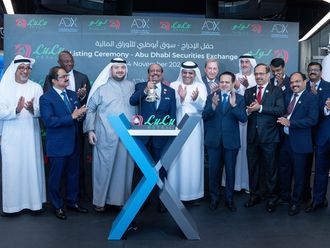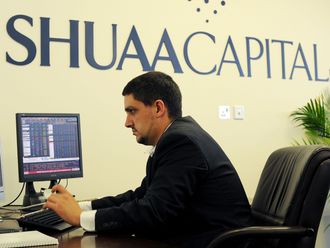Beijing: China’s leaders pledged to keep adjusting policies to ensure stable economic growth this year as a state newspaper said some banks are telling branches to boost local-government loans.
“The ongoing pace of economic growth is within expectations, but the external environment remains grim and poses difficulties and challenges to growth,” the official Xinhua News Agency reported today, citing a meeting of the Communist Party’s Politburo. The meeting also determined that maintaining stable growth is still the top priority, Xinhua reported.
The Politburo reiterated China will pursue a “prudent” monetary policy and “proactive” fiscal policy, signalling that authorities are trying to stem a six-quarter slowdown in the world’s largest economy without resorting to the level of stimulus implemented after the global financial crisis.
“If the economic situation worsens, China can ease more,” said Zhang Zhiwei, chief China economist at Nomura Holdings Inc. in Hong Kong. Options include further reductions in banks’ reserve requirements and benchmark interest rates, Zhang said.
Today’s statement, while not representing a change in policy wording, keeps options open for China to take additional measures if needed, Zhang said.
Premier Wen Jiabao reiterated that China will put more emphasis on stabilising growth and intensify “fine-tuning” while “unswervingly” implementing property controls and preventing home prices from rebounding, Xinhua said in a separate story about a meeting held July 26 with people outside the party. Downward pressure on the domestic economy is relatively large and low global growth will persist for a “fairly long period,” the report said, citing Wen. Policy tools
China will use different monetary policy tools to ensure stable growth in money supply and bank credit, Wen said.
The local branches are being instructed to give credit support to provincial-level vehicles and those backed by China’s 100 richest counties, according to a report today by the China Securities Journal that cited unidentified people and didn’t name any of the banks. The newspaper is published by Xinhua.
Relaxing control of lending to local governments would mark a shift in strategy as leaders try to boost economic growth that slowed to the least in three years. China had been seeking to reduce regional debts that ballooned from loans in the aftermath of the global financial crisis to 10.7 trillion yuan ($1.7 trillion).
“Measures to increase public investment, to be financed largely by bank credit, will be the most important ones in the near term” to aid growth, Wang Tao, a Hong Kong-based economist at UBS AG, said in a research note on Tuesday.
Negative effects
At the same time, Chinese leaders are “keen to avoid making a similar mistake” of using a credit boom to finance another round of fiscal stimulus as authorities did with the plan in 2008-09, which “left serious negative consequences” for the economy, Wang said.
The lending support will focus on roads, railways, natural gas and clean energy projects, the China Securities Journal said.
“We must see with a clear mind that there are difficulties and risks in the current economic situation that can’t be underestimated,” Wen said, according to Xinhua. President Hu Jintao said China will try to diversify export markets and will “expand and stabilize” employment, Xinhua reported.
The central government has cut interest rates twice since early June, reduced banks’ reserve requirements three times since November, sped approvals for investment projects and boosted railway spending as economic growth decelerated. Some cities are also increasing stimulus efforts, with Changsha last week unveiling an 829 billion yuan investment plan. Borrowing cap
Wen said at a press conference in March that China’s local government debt is controllable and rose by a net 300 million yuan in 2011 from the 10.7 trillion yuan at the end of 2010. The government will “properly” deal with the debt stock and put a cap on the increase in local government borrowing, he said.
China may not be ready to implement a broader relaxation of credit to regional authorities. The nation’s banking regulator said at its mid-year meeting that it will “continue to push forward risk control in loans to local government financing vehicles,” according to a July 27 statement.












